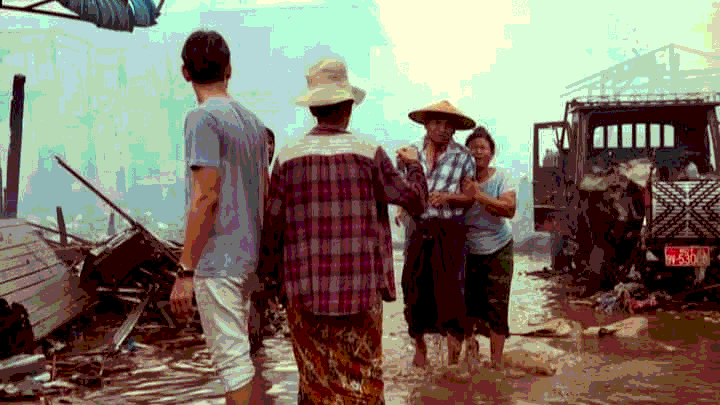“Myanmar Spring Chronicle – April 19 Overview”,
published by MoeMaKa on April 20, 2025:
✈️ Airstrikes Dominate the Daily Headlines
The top headlines in Myanmar’s news every day are increasingly centered on one tragic theme: how many civilians died due to airstrikes. Though the locations vary, the nature of the destruction—civilian deaths, damaged villages, bombed monasteries—has become grimly repetitive.
Recent days have seen daily airstrikes in the following regions:
-
Thabeikkyin Township in Mandalay Region
-
Kyunhla and Tantse in Sagaing Region
-
Parts of Rakhine State
-
Several villages in Karen State
🎯 Targeting Resistance-Controlled Areas
The junta has been repeatedly targeting areas controlled by the MDY-PDF (Mandalay People’s Defense Force), particularly in Thabeikkyin and Singu townships. These areas are geographically strategic—connected to territories held by the TNLA, KIA, and other PDF units under the NUG. They’re also rich in natural resources like gold, which provide income for resistance groups.
Typical airstrike targets include:
-
Village markets
-
Crowded gathering spots
-
Monasteries and schools, which are often suspected of hosting PDF camps
🧠 Strategy of Fear and Suppression
The military appears to:
-
Rely partly on ground intelligence
-
Sometimes strike without confirmation of resistance presence
-
Use airstrikes as a form of pressure on civilians to isolate PDF fighters
With their ability to launch effective ground offensives weakening, the junta increasingly turns to daily air raids as a way to intimidate and suppress. These attacks are not necessarily precise military operations but rather a broad tactic of psychological warfare.
PDFs and ethnic armed groups lack the ability to defend against air attacks, which the junta exploits. However, this is also causing deep resentment among local populations, further eroding support for the junta.
⚠️ Civilian Toll and War Crime Concerns
These airstrikes:
-
Rarely affect central military command or operations centers
-
Often kill large numbers of non-combatant civilians
As a result, the junta could eventually face accusations of war crimes, as indiscriminate airstrikes on civilian areas have become daily occurrences.
🔄 Strategic Shifts and Ceasefire Trades?
Since Operation 1027, several ethnic armed groups have gained significant territory. Now, as some groups reach a consolidated stage, the possibility of territory-for-truce exchanges is emerging.
Case in point: The MNDAA recently handed over control of Lashio back to the junta in exchange for a ceasefire and a guarantee that other areas under their control—such as Hseni, Laukkai, and Chinshwehaw—would not be bombed.
This has sparked debate:
-
Was it a pragmatic truce, brokered with Chinese influence?
-
Or a loss of revolutionary momentum for the resistance?
Observers note that China played a key role in this ceasefire, and without such pressure, this deal might not have happened.
🤔 Perception and Future of the Resistance
MNDAA’s truce has stirred controversy:
-
Some armed groups understand it as a tactical necessity
-
Others—and many civilians—struggle to accept the relinquishing of a hard-won city like Lashio
If more ceasefire deals like this emerge, public perception may shift, especially if they are seen as concessions rather than progress. Trust in revolutionary alliances could also be strained.
This raises difficult questions for resistance strategy:
-
How do they protect their territory from airstrikes?
-
Should they negotiate recognition or simply fortify their zones?
-
How do civilians reduce their visibility to avoid becoming targets?
🛡️ What Can Be Done?
Suggestions emerging from the ground include:
-
Dispersing civilian gatherings to reduce targeting
-
Avoiding large concentrations of fighters
-
Strategic concealment to prevent becoming easy targets
In this era of air-dominance by the junta, civilian casualties are mounting. As the junta continues its bombing campaign, local communities need urgent strategies to minimize losses and protect themselves.

